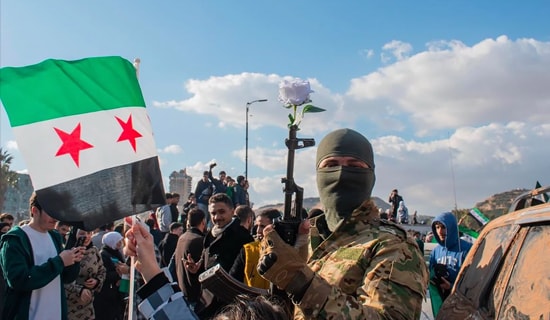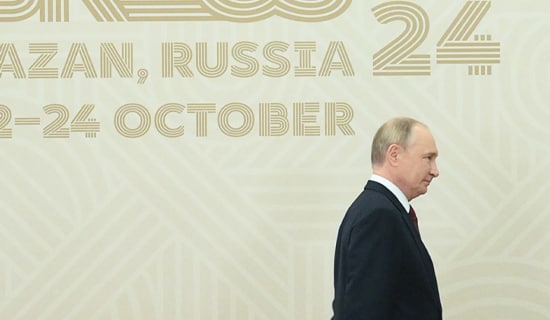Introduction
I. Hindu Terrorism
II. The Role of the Hindu "Abhinav Bharat" Group
III. Countrywide Attacks
Conclusion
Introduction
On November 10, 2010, Mohan Bhagwat, the chief of the Hindu nationalist group Rashtriya Swayamsevak Sangh (RSS, or the National Volunteer Organization), criticized the centrist Indian government for unleashing a campaign alleging the involvement of "Hindu terrorists" in several bomb blasts in predominantly Muslim towns in recent years.[1] He said that neither Hindus nor the RSS had ever been "synonymous with terrorism."[2]
The RSS was established in the 1920s as a patriotic organization, against British rule and Muslim separatism in India. Over the past decades, it has emerged as the mother of almost all Hindu nationalist organizations, including the Bharatiya Janata Party (BJP), which is the country's main right-wing opposition; Vishwa Hindu Parishad (VHP or World Hindu Council); Bajrang Dal; Shiv Sena; Akhil Bharatiya Vidyarthi Parishad (ABVP) (All India Students Council), which is the student wing of BJP; Hindu Jagran Manch; Shri Ram Sene; etc. These Hindu organizations are collectively known as Sangh Privar, i.e. the RSS family.
India's federal Minister for Women, Renuka Chowdhury, has described an attack on a pub by the Shri Ram Sene as an attempt to "Talibanize" India.[3]
The RSS chief's statement against equating terrorism with Hindus follows the arrests of several RSS-linked individuals for their role in a number of bomb blasts at the holy places of Indian Muslims. Currently, a huge controversy is raging in India over whether these individuals should be called "Hindu terrorists," while the Indian media is using the term "Hindu terrorist" to describe those arrested in connection with attacks on Muslim shrines and mosques, which were initially blamed on Indian Islamic terrorists.
Internationally and in India, there is a contentious debate over whether terrorism should be identified by religious affiliation, e.g. as Islamic or Hindu terrorists. However, not all terrorists are described by religious identity, whether Hindu, Muslim or Christian. In Pakistan, Muslims fighting for independence of Baluchistan province are known as Baluchi nationalist militants – but the Taliban and Al-Qaeda fighters are described as Islamic terrorists because they are fighting for the enforcement of Islamic Shari'a. In Sri Lanka, fighters of the Liberation Tigers of Tamil Eelam (LTTE) are not called Hindu terrorists. In Northern Ireland, Protestant or Catholic groups were not considered to be Christian terrorists, because they were not fighting to establish a Christian state.
In India itself, not all militants are described as Hindu terrorists. For example, leftist rebels are described as Maoist militants, or simply leftist rebels. However, Indian Muslim militants are dubbed Islamic terrorists, as they are fighting for an elusive Islamic victory.
Be all that as it may, the use of the term "Hindu terrorism" has rattled the RSS, BJP and other Hindu organizations in India, as all of them view themselves as true nationalists.
I. Hindu Terrorism
In recent decades, India has witnessed several types of terrorism: a) Pakistan-backed terrorism in Kashmir and mainland India, carried out by mainly Pakistani and Kashmiri terrorists; b) armed Communist movements led by Naxalites, or the leftist guerrillas fighting against state institutions in several Indian states to enforce socialism; c) Indian Islamic militants, who are connected mainly to the Students Islamic Movement of India (SIMI) – a purely indigenous Indian group which broke away from the Jamaat-e-Islami Hind and has developed links internationally and, in recent decades, to Pakistan; d) Pakistani-Indian terrorist groups, a new breed of Indian-sounding groups such as Indian Mujahideen and Deccan Mujahideen, which were created in a bid by Pakistani intelligence and jihadist groups to deflect international criticism against Pakistan for supporting terrorism in India.
A decision by the Indian government to extend a ban on SIMI for an additional two years was confirmed by a Delhi court in August this year.[4] Detailed information about the Indian Mujahideen and Deccan Mujahideen are yet to fully come to light. Some militants arrested in India in recent years have been described as belonging to the Indian Mujahideen and Deccan Mujahideen, with their connections trailing to Pakistan. It seems that Pakistani groups have succeeded in roping in some Indian Muslim youth, who were disaffected by the 2002 anti-Muslim riots in the western state of Gujarat, where the right-wing BJP is in power.
The term Deccan, meaning "south," refers to the "southern" Indian city of Hyderabad, which is described by people in Pakistan as Hyderabad Deccan, as there is another Hyderabad town in Pakistan. An Indian will not call Hyderabad as Hyderabad Deccan, and therefore there is a strong likelihood that the name Deccan Mujahideen was coined by a Pakistani national.
However, recent terrorist attacks that have turned the focus of public debate on "Hindu terrorism" include the February 18, 2007 blast on the Samjhauta Express (a train service between India and Pakistan); the May 18, 2007 blast in the Mecca mosque in the town of Hyderabad in the southern state of Andhra Pradesh; the October 11, 2007 blast at the shrine of 12thcentury Sufi mystic Khwaja Moinuddin Chishti in the town of Ajmer in the northern Rajasthan state; and the September 29, 2008 blast in the town of Malegaon in Maharashtra state of which Mumbai is the capital. These are the key attacks in which Hindu terrorists are believed to be involved, though a number of militant attacks in India have taken place in recent decades whose trails lead to Pakistan.
II. The Role of the Hindu "Abhinav Bharat" Group

Sadhvi Pragya Singh Thakur under arrest (image courtesy: outlookindai.com)
The first time Hindu terrorists came under the eyes of Indian counterterrorism investigators was the September 29, 2008 Malegaon blast. A day after the blast, the Indian police, which had prior intelligence information about this attack, ruled out the possibility of the involvement of Indian Mujahideen while noting that they suspected "Hindu radical groups."[5] Additional Director General of Police Sanjeev Dayal told the media that the blast did not have the signature of Indian Mujahideen, adding: "Hindu radical groups are on our radar."[6]
A month later, three individuals – Shyam Lal, Dilip Nahar and Dharmendra Bairagi (none of them Muslims) – were arrested from the town of Indore in the central Indian state of Madhya Pradesh.[7] Their arrests came because of their role in the theft of a motorbike that was used in the attack. On October 23, the police arrested several people, including Sadhvi Pragya Singh Thakur, a 38-year-old Hindu woman mystic or ascetic, who is the accused and an ABVP member.[8]
Shortly thereafter, police arrested Ramesh Shivji Upadhyay – a 57-year-old retired Indian Army major, and Sameer Sharad Kulkarni, another ABVP member.[9] Major Upadhyay is reported to have imparted military training to Sadhvi Pragya Singh Thakur. Some text messages sent to retired Major Ramesh Shivji Upadhyay from the mobile phone of serving Indian Army officer Lt.-Col. Shrikant Purohit led to the latter's arrest.[10] The arrest of Sadhvi Pragya Singh Thakur and of retired and serving Indian Army officers stunned the people of India, where a vibrant electronic media has trained its eyes on the role of Islamic terrorists worldwide. The arrest of a serving officer has raised questions about extremist elements in the Indian Army.
An Indian media report noted that "the involvement of Hindu groups in terror activities was suspected" following a number of unexplained bombings in mosques in the towns of Parbhani (2003), Jalna (2004) and Purna (2004).[11] Currently, 11 individuals are in police custody in connection with the Malegaon blast case. On July 19, 2010, the Bombay High Court upheld charges against them; among them were Sadhvi Pragya Singh Thakur and Indian Army officer Lt.-Col. Shrikant Purohit.[12] According to one report, Purohit is a founding member of Abhinav Bharat or Young India, a radical Hindu organization that has been at the center of attacks on Indian Muslim religious places.[13] Ramesh Shivji Upadhyay, the retired major, was the working president of Abhinav Bharat at the time of his arrest, based in the town of Pune, near Mumbai.[14]
Abhinav Bharat was founded a century ago by Hindu nationalist revolutionary V. D. Savarkar to fight against the British rule, but dissolved in 1952, five years after Indian independence. Following the arrests over the Malegaon blast case, it was revealed that like-minded Hindu groups had revived Abhinav Bharat formally in 2006.[15] Lt.-Col. Shrikant Purohit told a court that Pravin Togadia, secretary-general of VHP or World Hindu Council, was involved in financing and reviving Abhinav Bharat.[16] Himani Savarkar, the current president of Abhinav Bharat and niece of Nathuram Godse (who assassinated Mahatma Gandhi), told the media: "We do not support any kind of terrorism. But at the same time we want to make it clear that Hindus will not tolerate atrocities committed on them."[17]
III. Countrywide Attacks
Lt.-Col. Shrikant Purohit was also questioned by the Central Bureau of India (CBI or India's federal investigating agency) in connection with the May 18, 2007 blast at the Mecca mosque in Hyderabad. An Indian newspaper cited CBI documents as noting: "[During interrogation] Purohit claimed to have met Pragya [Singh Thakur] on October 5, 2008 to tell her that 'our people' had carried out the killings in Orissa, burnt down two churches in Karnataka, and also carried out the Malegaon blast."[18] The reference is to a series of attacks on Christians in the Kandhamal district of the eastern Indian state of Orissa and on churches in southern state of Karnataka.
There is a pattern to this violence: these attacks on Christian minority in Orissa and Karnataka states and on Muslims in the Gujarat state came at a time when the BJP, the right-wing Hindu opposition, has been in power or has shared power in these states. In other words, these attacks could not have been carried out without some involvement of law-enforcement agencies – or without their turning a blind eye to the attackers.
Lt.-Col. Purohit is also reported to have held a planning meeting at the Bhonsala Military School in the town of Nashik in Maharashtra state.[19] The Anti-Terrorist Squad (ATS) of Maharashtra also detained Colonel (retired) S. S. Raikar, an official of the military school, for questioning.
A number of Hindu militants have been arrested in connection with the Mecca mosque blast and the Ajmer shrine blast. All these cases are being tried by various courts in India. In June this year, the CBI added one Sunil Joshi, a member of the RSS, to the list of the accused in the 2007 Mecca mosque blast.[20] The accused already include four RSS members in the Mecca mosque blast case: Ramchandra Kalsangra aka Ramji, Sandeep Dange, Devender Gupta and Lokesh Sharma.
In the state of Rajasthan, where the October 11, 2007 Ajmer shrine blast case is under trial, the police have named but not indicted senior RSS leader Indresh Kumar as one of the key conspirators.[21] An 806-page indictment filed by the Anti-Terrorist Squad (ATS) of Rajasthan state also includes five Hindu militants of a radical Hindu group. According to the indictment, Indresh Kumar "took part in a secret meeting of right-wing fundamentalists in October 2005 in [the town of] Jaipur at which plans to carry out bomb blasts" at the Ajmer shrine, Mecca mosque and Malegaon were finalized.[22]
Of all these attacks, the February 18, 2007 Samjhauta Express blast is international in nature, as the train passengers were Pakistani nationals travelling from India to Pakistan. At least 68 people were killed in the blast near Panipat, about 80 kilometers from New Delhi. According to one report, Lt.-Col. Purohit supplied explosives that were used in the Samjhauta Express blast.[23] Although the role of the Hindu militants is suspected in the blast, the Indian investigators have yet to find conclusive evidence. In July 2010, the investigation of the case was handed over to the National Investigation Agency (NIA), a multi-agency investigator that was established after the 2008 Mumbai terror attacks.[24]
Conclusion
The trail of most of these attacks leads to a single nucleus of terror planning, with the key accused being Lt.-Col. Shrikant Purohit, retired major Ramesh Shivji Upadhyay, and Sadhvi Pragya Singh Thakur. Almost all investigations and arrests have led to some connections to the RSS, the mother of Hindu nationalist groups and of the country's main opposition Bharatiya Janata Party. Even after the cell involving the Hindu terrorists was uncovered by the Indian investigators, some militant attacks have taken place in which the role of Hindu groups is suspected. For example, in October 2009, police arrested four persons with links to extremist Hindu organizations following a bomb blast in the town of Margao, Goa.[25]
P. Chidambaram, the Indian Interior Minister of the ruling Congress party, used the words "saffron terrorism" to describe Hindu terrorism in India, blaming Hindu groups for recent bomb blasts in several Indian cities.[26] Saffron is the color of flags used by Hindu nationalist groups. Urging Indian citizens to be vigilant against extremist Hindu groups, Chidambaram said: "Saffron terrorism is a new phenomenon that has been implicated in many bomb blasts in recent past."[27] In turn, the RSS, BJP and other Hindu groups have accused the ruling party of launching a political campaign against them. Addressing a public meeting in October 2010, RSS chief Mohan Bhagwat took strong exception to the use of the terms "saffron terrorism" and "Hindu terrorism," stating: "Terrorism and Hindus are [an] oxymoron and can never be related to each other."[28]
However, Digvijay Singh, secretary-general of the Congress party, recently reminded the RSS of its earlier statement that "all Muslims are not terrorists but all terrorists are Muslims" and added: "All Hindus arrested for terror activities are linked to the RSS."[29]
Following the arrest of serving army officer Lt.-Col. Purohit in the Malegaon bombing case, a small group of the Indian Army officers came under surveillance. A report noted: "The officers who have been put under surveillance appear to have a lot in common with Purohit. The foremost similarity... was the seething anger among them about nothing being done to protect the 'Hindu Rashtra' [Hindu nation] against jihadi terrorists and other threats, and a strong desire to avenge the serial blasts allegedly carried out by [Pakistan-supported] jehadi bombers."[30]
The phenomenon of Hindu terrorism can be described, to some extent, as a reaction against Islamic militancy in India. On June 18, 2008, over three months before the Malegaon blast, an editorial in Saamna, a paper published by extremist Hindu party Shiv Sena of Maharashtra state in which Malegaon is situated, had warned: "Islamic terrorism is increasing in Hindustan [India] and to confront this Islamic terrorism, Hindu terrorism of equal strength has to be evolved. Like the Islamic extremists, unless there are Hindu suicide bombers to protect the nation..."[31]
*Tufail Ahmad is Director of MEMRI's South Asia Studies Project.
[1] www.timesofindia.com (India), November 11, 2010.
[2] www.timesofindia.com (India), November 11, 2010.
[3] www.expressindia.com (India), February 7, 2009.
[4] The Hindu (India), August 5, 2010.
[5] www.dnaindia.com (India), October 1, 2008.
[6] www.dnaindia.com (India), October 1, 2008.
[7] www.rediff.com (India), October 23, 2008.
[8] www.indianexpress.com (India), November 25, 2008.
[9] www.indianexpress.com (India), October 30, 2008.
[10] www.timesofindia.com (India), November 5, 2008.
[11] Frontline (India), July 31 – August 13, 2010.
[12] Frontline (India), July 31 – August 13, 2010.
[13] www.timesofindia.com (India), November 5, 2008.
[14] www.zeenews.com (India), October 28, 2010.
[15] www.zeenews.com (India), October 30, 2008.
[16] www.indianexpress.com (India), November 24, 2008.
[17] www.zeenews.com (India), October 30, 2008.
[18] www.indianexpress.com (India), November 24, 2008.
[19] The Hindu (India), November 13, 2008.
[20] www.rediff.com (India), June 22, 2010.
[21] www.timesofindia.com (India), October 24, 2010.
[22] www.hindustantimes.com (India), October 23, 2010.
[23] www.expressindia.com (India), November 15, 2008.
[24] www.timesofindia.com (India), July 29, 2010.
[25] www.zeenews.com (India), October 18, 2009.
[26] www.dainikbhaskar.com (India), August 25, 2010.
[27] www.dainikbhaskar.com (India), August 25, 2010.
[28] www.timesofindia.com (India), October 17, 2010.
[29] www.deccanherald.com (India), November 13, 2010.
[30] www.timesofindia.com (India), November 27, 2008.
[31] www.saamna.com (India), June 18, 2008.





